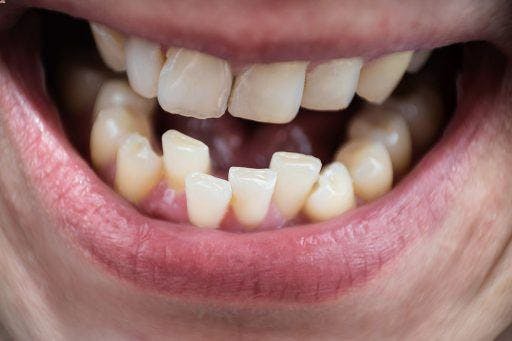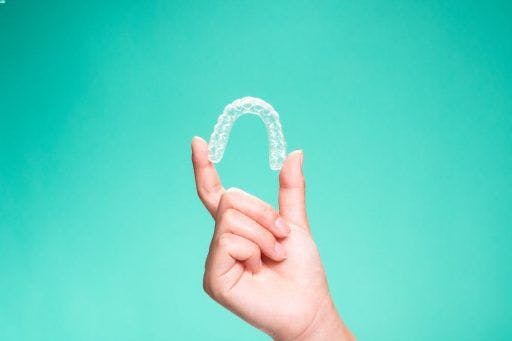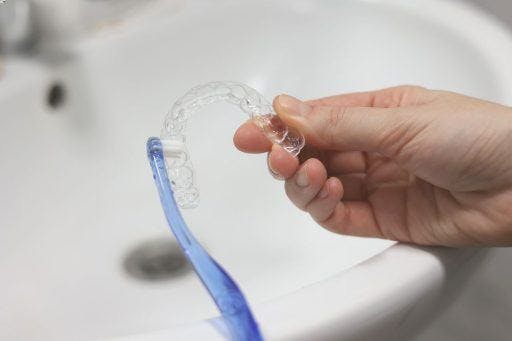These days, it seems like aligners for teeth are everywhere. Social media influencers love repping them, and some A-list celebrities have rocked them in their quest for that “Hollywood smile.” You may even know a few people in your circle undergoing treatment now. Although these appliances are so discreet, they can easily be kept secret – even from your closest friends!
So, what is the deal with clear aligners? Do they work, and could they be the teeth-straightening solution you’re looking for? There’s a lot to unpack, but this guide collates all the most frequently asked questions and answers them for you. Ready? Here’s what you need to know.
Question #1: Who Needs Clear Aligners?

Anyone dealing with malocclusion (misalignment or crookedness of teeth) can undergo aligner therapy to correct the issue. Of course, the type of orthodontic appliance you’ll need will depend on the specifics of your case and your treating doctor’s recommendation.
Question #2: How Long Is Aligner Treatment?
Treatment duration varies from case to case. “Simple” misalignment cases requiring small movements, like minor tooth gaps, can take as little as six months to resolve. Meanwhile, more complex issues, such as Class III malocclusions, can take upwards of three years.
Your treating doctor should be able to estimate how long you’ll need to undergo aligner therapy. However, these projections aren’t always set in stone. Some factors will be out of their control, including patient noncompliance, poor oral hygiene practices, and preexisting health conditions.
Question #3: Do You Sleep With Clear Aligners?
Yes, most patients will need to wear aligners while sleeping to comply with the recommended wear schedule of at least 22 hours daily. Doing so gives you the best chance of completing treatment within your ideal timeframe. Additionally, you’ll want to visit your treating doctor once every six weeks (or as required) so they can monitor your progress and make necessary adjustments.
Question #4: Is There an Age Limit for Clear Aligners?
No, there’s no maximum age for undergoing treatment with clear aligners. However, there are differences between seeking orthodontic treatment in your adolescent vs. adult years. Most experts agree that your early teens are the best time to address misalignment since your jaw is more malleable and receptive to change. But that doesn’t mean it’s your only chance.
Older adults can still benefit from clear aligners, but progress may take longer given their fully formed jaws. Additionally, doctors must consider factors like age-related oral health concerns and existing dental work when formulating treatment plans for this age group.
Question #5: What Are Clear Aligners Made Of?

Most clear aligners for teeth use medical-grade plastic, but quality varies depending on how each brand engineers their products. For example, ClearCorrect uses ClearQuartz – a proprietary, tri-layer material with resilient polymers and an elastomeric inner layer.
Translation: It makes for durable, flexible, and stain-resistant aligners that apply consistent yet gentle pressure on teeth. That force is what makes painless teeth straightening possible.
Question #6: Is Wearing Clear Aligners Painful?
You can expect some discomfort at the start of every new aligner change since your teeth are still adjusting to the pressure. But rest assured, any pain or sensitivity you experience will be mild and temporary. Properly fitted aligners shouldn’t hurt beyond the first few days of wearing them. If you are experiencing pain that is of concern, please speak to your treating doctor. There may be underlying oral health issues that need addressing.
Question #7: Can You Eat or Drink With Clear Aligners?
Clear aligners typically can’t handle the pressure from chewing or biting, so take them off for snacks or meals. And as stain-resistant and durable as they are, you should still avoid drinking dark-coloured liquids or anything hot while wearing them. These substances can damage the material with frequent contact. When your aligners aren’t in use, store them in their proper container to help maintain their quality.
Question #8: Can You Brush Your Clear Aligners?

Yes, brushing is one of the easiest and most reliable methods of keeping your aligners clean. Use a dedicated soft-bristled toothbrush and nonabrasive toothpaste for the task. Some experts also recommend denture cleaners and mild antibacterial soaps as alternatives.
Scrub your aligners gently to dislodge food particles and other debris. Make sure to do this every morning and night as part of your oral hygiene routine.
Question #9: Can Clear Aligners Change Your Face Shape?
Several factors contribute to your overall face shape, including your jawline, bone structure, and how taut your skin is. Undergoing aligner therapy can have a minor impact on your facial profile, but a major transformation will typically require surgery and other cosmetic procedures.
Question #10: Can You Kiss With Clear Aligners?
Yes, you can! Your partner might not even notice you’re wearing them. Clear aligners fit snugly over the teeth, which makes them unlikely to become loose during a make-out session.
Question #11: Do You Have to Wear Aligners Forever?
No, most patients won’t have to wear their aligners forever. Three years is already on the lengthier end of treatment durations. However, some may need to wear retainers for the foreseeable future to maintain their teeth’s new alignment and prevent relapse.
Question #12: Do Teeth Aligners Really Work?
Yes, they really work. Since 2006, over half a million patients (and counting!) have undergone aligner therapy with ClearCorrect to achieve their perfect smiles and healthier bites. Read patient testimonials, view their before-and-after photos, and find out if you might be a candidate for treatment. But as always, talk to your dentist for their professional advice.
Are you curious to know more about aligners for teeth? Browse BeSeen for all your preliminary research needs! Sink your teeth into the science of teeth alignment, get tips on proper dental care, learn how your smile impacts your confidence, and more.
References:
Australian Society of Orthodontists. (2022b, October 25). How braces can change the shape of your face. Orthodontics Australia.
Australian Society of Orthodontists. (2023b, March 8). How to clean and take care of clear aligners. Orthodontics Australia.
Australian Society of Orthodontics. (2022, August 6). Orthodontic Retainers For Teeth: Fixed And Removable Types. Orthodontics Australia.
Australian Society of Orthodontists. (2023b, March 8). Traditional Braces vs Clear Aligners. Orthodontics Australia.
Baum, A. (2023). Am I too old for orthodontic treatment? American Association of Orthodontists.



